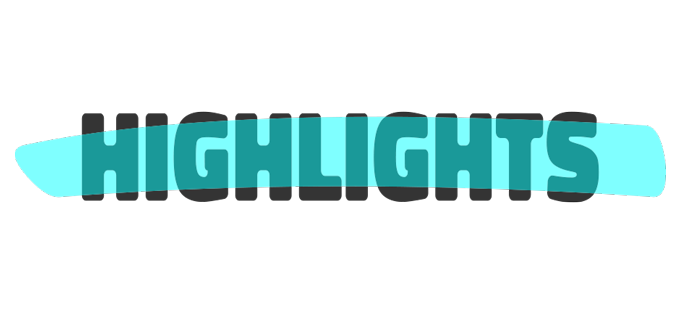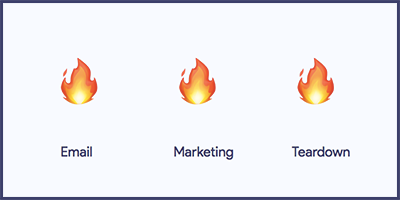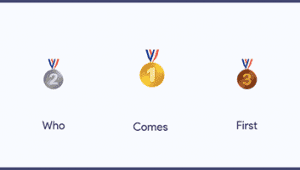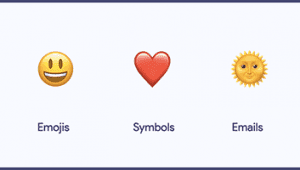Email Marketing Teardown – Zapier
?
?
Marketing
?
Teardown
Zapier was founded in 2011 by Wade Foster, Bryan Helmig, and Mike Knoop during a Startup Weekend event.
Although the first version of Zapier only connected 25 apps, it showed the promise of their workflow and API automation platform, enough for Zapier to raise $1.3M in funding.
Within 5 years of company formation, Zapier had signed up over a million users, who had automated more than 4 million Zaps, Zapier tasks.
As of November 2018, the Zapier platform had more than 1,300 apps and was generating $35M in annual revenue.
Zapier has now over 170 employees, most of which work remotely in 15 different countries around the world.
Why an Email Marketing Teardown of Zapier
We already mentioned that we ❤️ automation. At LANDR before, and now with Highlights, we often find ourselves trying to use Zapier for the fun of it.
So far, we found 2 use cases worth automating:
- Transferring leads from an analytics platform to a spreadsheet;
- Tracking social media mentions in Slack.
We’ll keep looking for more use cases ?, but it’s a good start.
As a fellow bootstrapped and distributed business, we share a lot of the same values and our approaches are similar.
The Zapier team is clearly doing a lot of really good things on the product and marketing side (great SEO!), but how good are they at email marketing? Let’s find out:
Zapier’s Email Program
Although Zapier is a freemium Software-as-a-Service (SaaS) product like Drift, MailChimp, and Trello, their 14-day free trial is more structured and directive than any of the above.
This leads to a more straightforward SaaS email onboarding sequence building up to a clear upsell email.
Upon signing up, I received the following signup confirmation email:

The email had a very clear subject line. The template was simple. It did however pull in many directions: We’re Hiring!, Read our Blog, Follow us on Twitter, and… eh… oh yeah… Confirm Your Email Address by clicking the big bold button.
I was a bit confused by the warning message. In fact, I’m still not sure I get the message… This seems like a scenario that would have been better handled through segmentation and behavioral messaging. A yellow warning message is a bad start to any relationship…
Note: This first (transactional) email did not include the mandatory unsubscribe link (??????).
The Welcome Email
Following the initial confusion (clicking the big confirmation button really), I received Zapier’s welcome email:

The subject line was straightforward and the email was very effective. At this point, Zapier’s goal is clearly to get users to create their first Zaps.
The repetition of the call-to-action (CTAs) at both the top and bottom of the email using different button labels makes it clear what the core action is.
Although the explanation in the ‘How to Make the Most of Zapier’ section helps communicate the general idea, it opens additional doors, which may hurt completion of that core action.
The copy is concise and the visuals are appealing. Overall, it’s a very effective email. We go in details on how to create similar emails in our SaaS Email Masterclass.
The Onboarding Emails
Using Zapier requires a certain level of ‘creativity’. The use cases may be clear to some, but as I mentioned before ☝️, it’s a blank slate, a lot of users probably need to come up with their own uses of Zapier.
Because communicating that is not an easy thing to do, I was surprised by how few onboarding emails Zapier actually sends:
- Day 2 – ? “Watch: Make Your Apps More Flexible”
- Day 5 – ? “How the Experts Automate”
- Day 7 – ? “Find Your New Favorite App”
Onboarding Email Breakdown
The onboarding sequence focuses on showcasing creative uses of Zapier. I assume that the idea is that, in turn, this leads to engagement, and eventually subscription purchases.
The sequence uses video, use cases, and documentation to appeal to different learning styles. Using different media types is a good way to enhance the product learning experience.

The first email has a solid subject line that focuses on a core benefit of the platform (flexibility). It links to a short (78 seconds) video tutorial. The call-to-actions in the email, and in the video player after watching both work really well.
Throughout the onboarding sequence, Zapier hints at the availability of its support team and documentation, which helps reassure new users and opens the door for questions and feedback.

The second onboarding email uses social proof to demonstrate other uses of the platform. The email has a very strong subject line that helps reinforce Zapier’s appreciation for its customers.
The use cases selected for the email (operations, productivity, customer support) once again highlight the flexibility of the platform. With good data segmentation, Zapier could personalize these stories based on needs and early behavior.
The articles linked in the email include preset zaps. This greatly helps reduce the friction for action for Zapier users.
The images – the biggest clicks zones in the email – don’t have links, which feels like a wasted opportunity, especially on mobile.

The last onboarding email expands even more the use of Zapier users. The focus on productivity is interesting; this tells me that productivity apps are probably a key driver of engagement for them.
The email makes good use of animation (the top banner is animated ?). The animation helps focus the recipient’s attention on the content header.

Within the email body, Zapier links to 6 different categories (e.g. https://zapier.com/blog/best-calendar-apps/), which allows their content team to update the content without having to change links in the email.
As the free trial is coming to an end (day 7 of 14, so… sortof), the bottom support section is used to remind the user of the pending trial expiry. It opens doors for direct contact, which can be a good way to overcome objections and help users along. Good details.
The Upsell Email
As mentioned above, Zapier users start with a more structured free trial. On day 13, the day before the trial ends, Zapier sends the following upsell email:

The upsell email clashes ?? with the 5 previous emails.
Not only does it have a different tone, it also uses a plain text template, and comes from Zapier’s CEO, Wade Foster… well… it looks like it does at least… The email, like the previous 5, was actually sent from ‘[email protected]’ ?.
That said, Zapier’s first upsell is really effective (it actually inspired our own at Highlights).
It has a strong subject line, feels personal, uses time (Oct 24, 2018 at 6:31 p.m. CST) to create a constraint, lists what the reader stands to lose (‘no longer have access to…’ and ‘Any workflows you have that don’t meet your plan’s limits will be turned off’), and points to the free plan limits to reassure the users.
It’s one of the most effective upsell emails I’ve seen. It could have been even more effective if it linked directly to the appropriate premium plan (not the pricing page) and used the P.S. to reinforce the purchase, not distract from it.
Note below ? the Zapier email preference settings. It shows the full extent of their email marketing efforts:

The Feature Update Email

On Day 14, a day after I got the upsell email, I received a (major) feature launch email.
Considering the timing and exclusivity of the feature on paid plans, I initially thought that this was an upsell email. After investigation, it turns out that this was just random luck. ?
The feature launch email uses a slightly different template to create differentiation. It combines social proof, video and documentation to share the story; the 3 models we saw in their onboarding sequence.
The repeated mentions that the new feature requires a paid subscription, but can be tried for free helps build the value of the feature while the ‘Tweet About This’ link is a good way to amplify the feature launch.
The Nurturing/Transactional Emails
In spite of the great upsell email and the feature launch, we did not upgrade to a paid plan. We did however continue to use Zapier. Because of this, we received the following transactional emails:

The first email was an upsell in disguise.
Zapier uses an artificial constraint (e.g. 80% of task limit) to drive subscription purchases. The use of ‘[Action Needed]’ in the subject line is questionable. It’s not really true, but I’m sure it helps increase the open rate.
Zapier builds back trust by linking to the task history (for validatation), opening the door for help and support, and using a matter-of-fact tone.

The second transactional email was intended to drive further usage and discovery. In it, Zapier shares a selection of apps opening 4 doors for discovery:
- New apps added recently;
- An app featured by the Zapier team;
- An update to an app I had used;
- A general link to the app directory.
The whole thing is engineered engagement and discovery, but I’m sure it works. Since the subject line is generated based on app names (not the specific ones I use), this email’s open rate probably fluctuates based on relevance.

Eventually, we did run out of tasks… This time, the ‘Action Needed’ in the subject line was warranted.
The email we got was a bit lengthy and could definitely be more pushy (Zapier is playing the long game with these emails).
The email does a good job of reassuring the user (‘you won’t lose your data’), making them feel important (‘the awesome work you automated’), and setting a deadline (‘within the next 30 days’).
Sometimes indirect upsells work better than hard pushes.
Email Marketing Teardown – Takeaways
No email marketing program is perfect. Let’s look at what Zapier is doing well… and less well:
The Good
- ✅ Very solid onboarding sequence and a great upsell email;
- ✅ Good (simple) transactional emails to stimulate user engagement;
- ✅ Different email templates used for the different sequences;
- ✅ Good copy in general;
- ✅ Granular email preference settings.
The Bad
- ❌ The onboarding sequence could be expanded;
- ❌ Some of the subject lines could be stronger;
- ❌ Zapier could use more personalization across its email program;
- ❌ Some images were missing links and some links were missing tracking;
- ❌ The signup confirmation email did not include an unsubscribe link.
Email Marketing Teardown – Score
Interested in building your own email program?
We just launched a SaaS Email Masterclass ? to help increase trial conversions with email.
Zapier is doing a lot of really good things with emails. Their SaaS email onboarding sequence and their upsell emails are very effective. It uses emails creatively to drive product engagement, but although the emails are really good they could use a bit of refinement.
Overall, Zapier shows it still some room to improve the performance of its email marketing program:
Final score: 8.8/10 ?
Do you agree with us? Let us know in the comments below.?





Hey. Nice teardown.
But…. I don’t agree with your conclusion that it’s a very solid onboarding sequence (I’ve also recently ish gone through the Zapier free trial).
I think it’s weak.
Why?
Because it’s not centered around my actions within the app. And for something as technical like Zapier, you need to take actions to get to your “aha” moment.
There’s a path to getting the value from Zapier and realizing it’s a critical tool if you’re doing any kind of automation. Zapier are kind of giving the map but they’re not holding my hand and showing me the way.
The funny thing is, you’d think a SaaS like Zapier could easily hook up all the necessary automation to make that work.
Paul
Excellent analysis, full of learnings. thanks for sharing!